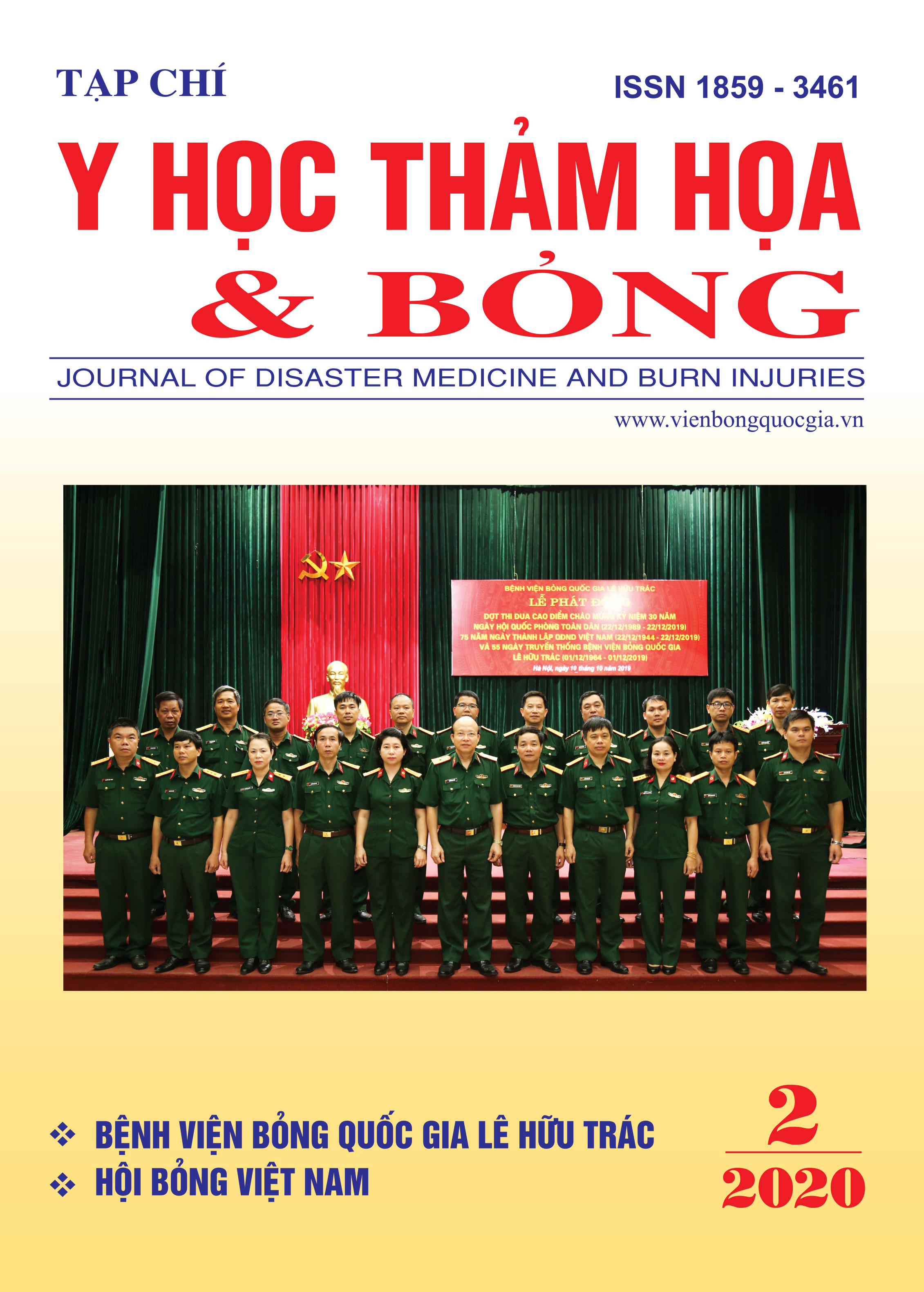Application of liposuction techniques in thinning flap: Initial results
Main Article Content
Abstract
In reconstruction, the thinning flap is necessary to ensure the suitability of flap with the features of a defect. However, thinning techniques have not been introduced popularly in literature. Most of plastic surgeons have applied the technique introduced by Hyakusoku et al. in 1994 - using scissors to cut off the subcutaneous fat layer.
Firstly, we apply liposuction to thin flap in three flap, deep inferior epigastric perforator free flap, superficial cervical perforator flap and circumflex scapular artery perforator free flap.
All flaps survive completely, have the suitability of flap with the characteristics of reconstructive area.
Article Details
References
1. Hyakusoku H. and Gao J.-H. (1994) The “super-thin” flap. British journal of plastic surgery.47 (7): 457-464.
2. Chetboun A. and Masquelet A. C. (2007) Experimental animal model proving the benefit of primary defatting of full-thickness random-pattern skin flaps by suppressing “perfusion steal”. Plastic and reconstructive surgery.120 (6): 1496-1502.
3. Ogawa R. and Hyakusoku H. (2008) Flap thinning technique: The effect of primary flap defatting. Plastic and reconstructive surgery.122 (3): 987-988.
4. Ohjimi H., Taniguchi Y., Kawano K.. et al. (2000) A comparison of thinning and conventional free-flap transfers to the lower extremity. Plastic and reconstructive surgery.105 (2): 558-566.
5. Kimura N., Satoh K. and Hosaka Y. (2003) Microdissected Thin Perforator Flaps:: 46 Cases. Plastic and reconstructive surgery.112 (7): 1875-1885.
6. Askouni E. P., Topping A., Ball S.. et al. (2012) Outcomes of anterolateral thigh free flap thinning using liposuction following lower limb trauma. Journal of plastic, reconstructive & aesthetic surgery.65 (4): 474-481.
2. Chetboun A. and Masquelet A. C. (2007) Experimental animal model proving the benefit of primary defatting of full-thickness random-pattern skin flaps by suppressing “perfusion steal”. Plastic and reconstructive surgery.120 (6): 1496-1502.
3. Ogawa R. and Hyakusoku H. (2008) Flap thinning technique: The effect of primary flap defatting. Plastic and reconstructive surgery.122 (3): 987-988.
4. Ohjimi H., Taniguchi Y., Kawano K.. et al. (2000) A comparison of thinning and conventional free-flap transfers to the lower extremity. Plastic and reconstructive surgery.105 (2): 558-566.
5. Kimura N., Satoh K. and Hosaka Y. (2003) Microdissected Thin Perforator Flaps:: 46 Cases. Plastic and reconstructive surgery.112 (7): 1875-1885.
6. Askouni E. P., Topping A., Ball S.. et al. (2012) Outcomes of anterolateral thigh free flap thinning using liposuction following lower limb trauma. Journal of plastic, reconstructive & aesthetic surgery.65 (4): 474-481.


